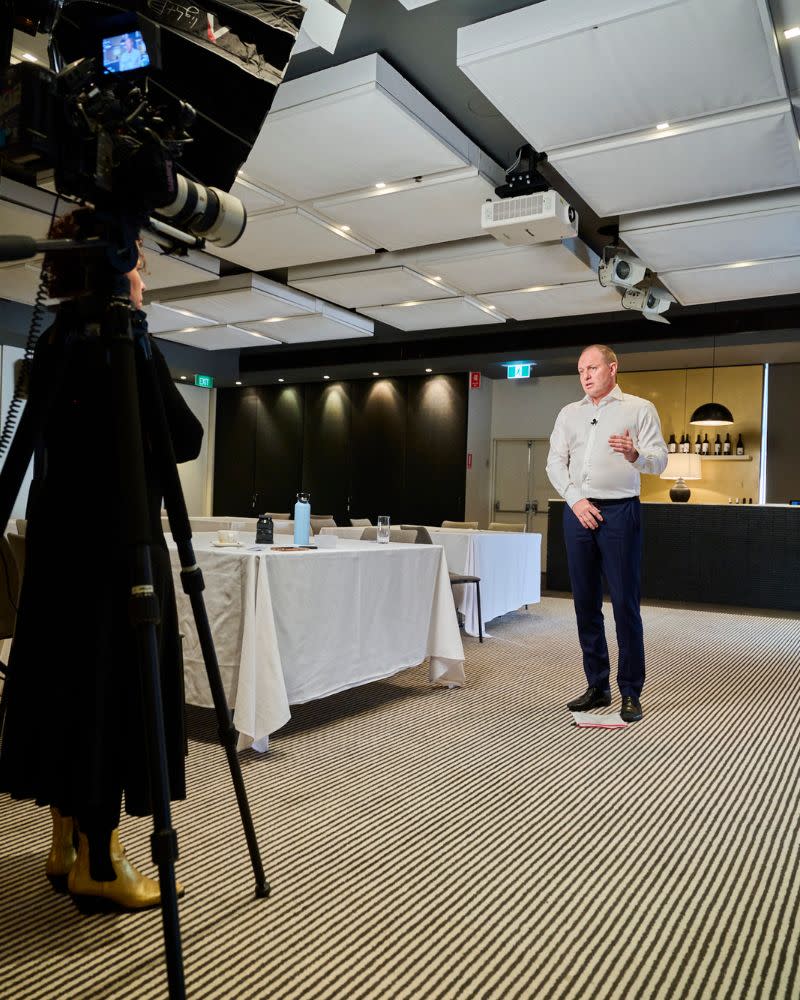Resources
Newsletter
Stay up to date and with the latest news, projects, deals and features.
Subscribe
Capital has been flowing out of the office sector and into industrial in a change of fortunes over the past two years—and Centennial’s chief executive of industrial and logistics Paul Ford says they are in a good position to capitalise on it.
Speaking at The Urban Developer and MaxCap Roundtable, Ford says he is optimistic about the long-tailed boom in the sector.
“Looking ahead for the next 12 to 18 months, the growth outlook is quite strong, and demand is higher than it’s ever been. But the main issue is supply constraints both in the inner and outer rings,” Ford says.
“There is practically very little supply coming in the next two to three years which bodes well for rental growth.”
But Ford cautions there could be some recessionary headwinds to contend with.
“A lot of what we’re doing is speculative development to meet immediate demand.
“If you’ve got core or core plus product, don’t even bother … everyone’s looking for value-add and still chasing that extra return.”
Australia has the lowest industrial and logistics vacancy rate in the world at just 0.6 per cent.
Centennial’s strategy of selecting mid-sized or under-capitalised assets within inner-ring and land-constrained markets has led to very strong growth for the fund manager, which now has 62 industrial assets across four states valued in excess of $1.1 billion.
READ MORE FROM THIS SERIES
[+] Risk and Reward: Construction Keeps Developers Up at Night
[+] View From the Top: ‘Something Needs to Break’
“We don’t see demand tailing off materially in the short to medium term albeit there could be some moderate slowdown should we enter a recession,” Ford says.
“However given there are severe supply constraints, we see only demand for industrial and logistics warehousing continuing to outpace supply.
“Our book values are still going up; we’ve witnessed about a 100-basis point softening in capitalisation rates and values are still going up on the back of very strong rental growth.
“We’ve got about a dozen transactions in train at the moment, and we’re seeing it on both the buy and sell sides.”

Ford said while there has been yield expansion, rents are also increasing well beyond forecasts.
“The only other main supply that hasn’t yet come on in the inner-rings is multi-storey warehousing.
“Multi-storey absolutely has merit and a place, however, it isn’t currently economical in many locations except for South Sydney. There is no doubt supply of this product will increase over the medium to longer term in locations with high enough land values to justify it.
“Land values need to lift to enable that to become economic … they’re probably 70 per cent there in a number of locations but until land growth is at a level where it’s high enough, multi- storey supply will be constrained, but when it does, it will help ease that burden but that is at least a few years away.”
The battle to get assets out of the ground quickly is ongoing with planning and infrastructure constraints adding to the lack of supply across most markets according to Ford, but there is a depth of capital looking to be deployed across the booming asset class.
The same cannot be said for office assets as a dislocation between book values and market values, forecast at between 15 and 20 per cent, is set to play out over the coming months, according to Avenor co-founder James Paver.

After lining up the Atlassian deal in Sydney’s Tech Central, Paver says the developer has been unable to put its foot on something in office that stacked up.
“Office was the focus until last year for the most part. So we did the Atlassian project and a couple of others. Sold the Atlassian project to Dexus and we are kind of tools down at the moment in office, because obviously there’s a reset that’s happening at the moment,” Paver says.
“The valuations that come out will give us a bit more of a read on office and the dislocate.
“If these couple of trades happen now we’re hearing high 6s in cap rates, but they can’t point to anything. We’re keeping an eye on office, we’re still running models but it doesn’t stack right now.”
MaxCap head of direct investment Simon Hulett says the uncertainty of the future of office is playing out across other areas.
“That hub and spoke model’s dead,” he says.
“It’s hub and home now, and that decentralisation model is something that’s really uncertain and that’s impacting on suburban properties.”
Top 10 office players in 2023
| Rank | Buyer | Transaction value | Number of properties |
| 1 | Charter Hall | $3063 | 13 |
| 2 | NPS | $1825 | 2 |
| 3 | Lendlease | $1333 | 6 |
| 4 | AsheMorgan | $1221 | 2 |
| 5 | Mitsubishi Estate | $1145 | 2 |
| 6 | GIC | $1085 | 2 |
| 7 | Blackstone | $925 | 1 |
| 8 | Dexus | $714 | 2 |
| 9 | Centuria Capital | $662 | 3 |
| 10 | Allianz | $625 | 1 |
^Source: MSCI
MaxCap head of research Bruce Wan says there is a price correction on the horizon for office assets.
“Australia compared to the US is way ahead in terms of those return to work numbers,” Wan says.
“There is that correction, the adjustment, the re-pricing that needs to occur in the office space. Once that price discovery occurs you will unleash the floodgates.”
According to MSCI head of real assets research Benjamin Martin-Henry private investors are more active in the commercial market in 2023.
In the first five months of 2023, private investors have engaged in commercial property transactions totaling just under $5.5 billion. It’s a decline of 53 per cent compared to the same period in 2022.
You are currently experiencing The Urban Developer Plus (TUD+), our premium membership for property professionals. Click here to learn more.
